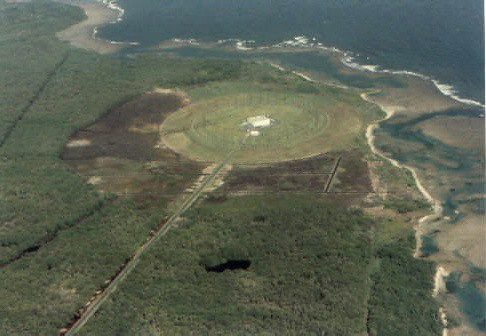History
Dedicated to those who have shared the experience of serving at one of the Cold War’s more interesting outposts.

Sailors who were stationed at Galeta Island lived a few miles away in Coco Solo. Established as a submarine base in 1918, not long after the Panama Canal opened, the base was expanded to include the Coco Solo Naval Air Station. Senator John McCain was born at a small hospital here in 1936. In 1941, the larger Coco Solo Hospital was built. During World War II, the Coco Solo Naval Air Station was home to a squadron of P-38 Lightening aircraft.
Coco Solo, while still housing some military, became housing for Panama Canal Company workers. It had a commissary, movie theater, and the Cristobal Junior & Senior High School. In the 1960s as the Cold War escalated, NSGA Galeta Island was also growing – expanding from about 130 sailors in 1966 to around 300 in 1968.
The Panamanian city of Colón was the nearest city and provided shopping, restaurants, and other entertainment for the youthful American military stationed at Fort Gulick, Coco Solo, and other small installations. Colón was founded in 1850 by Americans working on the Panama Railroad. After the completion of the railroad in 1855, Colón became the most important Caribbean port in Panama. With the building of the canal, its importance grew even more.
Colón is built on a swampy island and was historically a very unhealthy place to be. Yellow Fever was repeatedly a serious threat until Colonel William C. Gorgas came to Panama and addressed the issues of sanitation by draining the surrounding swamps and constructing a system waterworks and sewage facilities.
Today, Colón is an important port, commercial center, and tourist destination. In 1953 it was made a free trade zone and is now the world’s second largest duty-free port. Since the time that the Canal Zone was returned to the Panamanian government, the city has expanded in area to include the former Canal Zone towns of Cristobal, Rainbow City, Margarita, and Coco Solo, as well as the former army base at Fort Gulick.
Galeta Island, Panama Canal Zone |
||||
| Radio Compass Station, Toro Point, Panama | 18 May 1925 | Dec 1952 | ||
| NAVRADSTA Galeta Island, Panama | 1930's | Dec 1952 | ||
| NAVCOMMUNIT 33, NAVRADSTA Galeta Island, Panama | Dec 1952 | Dec 1958 | ||
| NSGA Galeta Island, Panama | Dec 1958 | 30 Jun 1995 | ||
| To: Republic of Panama | 31 Dec 1999 | |||
| To: Smithsonian Tropical Research Institute - Punta Galeta | Present | |||
